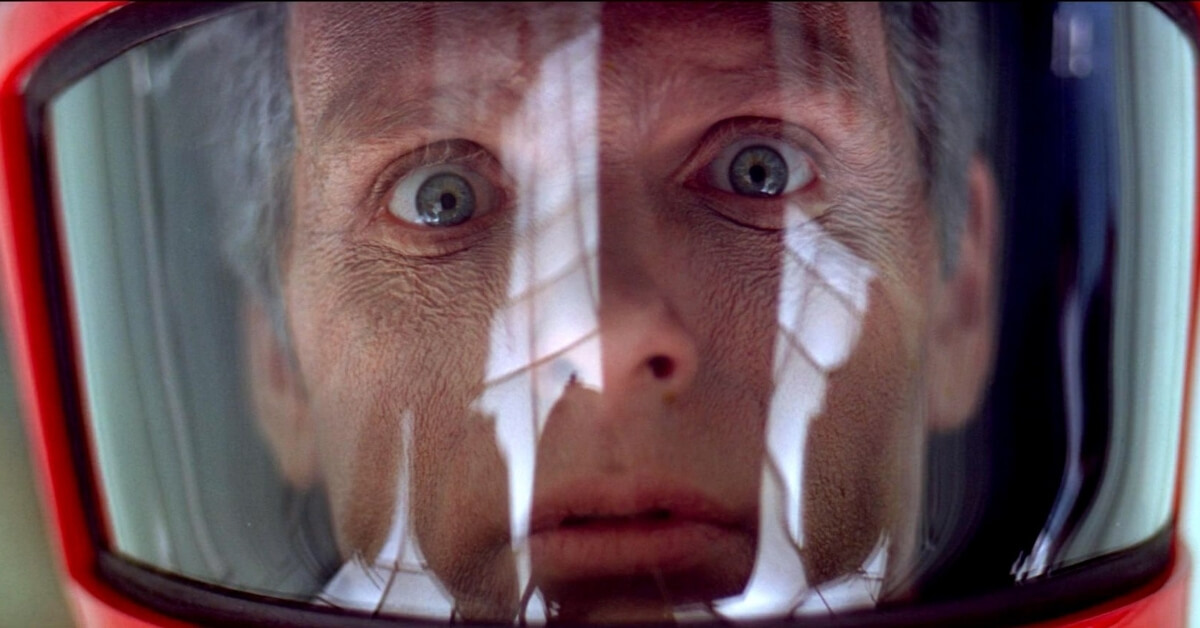Ever felt like you’ve been launched into a cosmic blender and spat out more questions than when you started? That’s the feeling many get after the mind-bending finale of Stanley Kubrick’s masterpiece, 2001: A Space Odyssey.
This cinematic enigma has puzzled, amazed, and inspired debates among moviegoers and scholars alike since its release. Despite the countless interpretations and theories, the ending of this epic space odyssey remains as mysterious and captivating as ever.
At the end of “2001: A Space Odyssey,” Dave Bowman transcends his human form, becoming a Star Child, a being of the next stage in human evolution, overlooking Earth as a symbol of new beginnings and infinite possibilities.
The Journey Beyond the Infinite
The climax of 2001: A Space Odyssey is a psychedelic trip through time, space, and dimension that leaves audiences awestruck and, often, bewildered.
After encountering the final monolith near Jupiter, astronaut Dave Bowman is pulled into a Star Gate, launching him on a journey that defies the laws of physics and human comprehension.
This sequence, devoid of dialogue and explanation, relies on its visual spectacle to convey its narrative, a hallmark of Kubrick’s directorial genius.
Stanley Kubrick himself provided a rare insight into this enigmatic conclusion. In an unearthed interview from an unreleased 1980 documentary, Kubrick explained,
“The idea was supposed to be that he is taken in by god-like entities, creatures of pure energy and intelligence with no shape or form. They put him in what I suppose you could describe as a human zoo to study him…”
This explanation, while shedding light on the nature of the neoclassical bedroom and its alien architects, only adds layers to the film’s profound ambiguity.
The monoliths, central to the film’s mythology, are established as catalysts for human evolution. From the dawn of man to the discovery of the moon and finally to Jupiter, these enigmatic structures push humanity beyond its limits.
The final monolith acting as a wormhole suggests a deliberate choice by these unseen entities to propel Dave—and, through him, humanity—into a new phase of existence.
Kubrick’s depiction of the bedroom as a “human zoo” crafted by these god-like beings offers a perspective on humanity’s place in the universe. It’s a humbling reminder of our smallness on the cosmic scale, a theme that resonates deeply within the film’s narrative.
The transformation of Dave into the Star Child signifies not just the next step in human evolution but a rebirth of possibility, as seen through the eyes of an advanced, albeit incomprehensible, intelligence.
Dave Becomes The Star Child: Friedrich Nietzsche’s Übermensch
This segment of the film can be seen as a visualization of Nietzsche’s concept of the Übermensch, a being who transcends the limitations of conventional morality to create new values.
Kubrick’s Star Child, floating in orbit above Earth, embodies this philosophical ideal, representing humanity’s potential to surpass its current state.
So, we’re floating in space, right? Dave’s just disabled HAL, the not-so-friendly onboard computer, and finds himself face-to-face with Jupiter and the infinite beyond. What follows is a sequence so bewildering it’s as if Kubrick decided to take the concept of a plot twist and launch it into a black hole.
Dave stumbles upon a monolith in orbit around Jupiter, and then, well, things get weird. He’s pulled into a vortex of colors and lights, witnessing bizarre landscapes and versions of himself aging in a room that looks suspiciously like it was furnished by intergalactic Ikea.
In a 1968 interview with Playboy, Kubrick spilled some cosmic beans: “You’re free to speculate as you wish about the philosophical and allegorical meaning of the film… but I don’t want to spell out a verbal road map for 2001 that every viewer will feel obligated to pursue or else fear he’s missed the point.”
Translation? Kubrick wants you to do the heavy lifting, pondering the existential and cosmic questions he poses without handing you the answers on a silver platter.
Kubrick further muddies the cosmic waters by discussing the concept of God, not in the traditional sense but as a presence or force that’s the culmination of advanced intelligence in the universe.
He imagines a progression from biological beings to immortal machine entities and finally to beings of pure energy and spirit. This evolution mirrors Dave’s transformation into the Star Child, suggesting a transcendence beyond human understanding.
But here’s the kicker: while Kubrick offers these nuggets of insight, he also insists that the film’s meaning is not tied to any single interpretation.
The ending, with Dave’s transformation and the appearance of the Star Child, is less about providing answers and more about igniting questions. It’s a cinematic invitation to explore themes of evolution, intelligence, and our place in the universe.
So, did Dave Bowman really experience all these cosmic events, or is it a metaphor for humanity’s potential? Kubrick leaves us hanging on purpose, preferring to let the movie’s imagery and sequences resonate on a deeply personal level with each viewer.
A Glimpse into Eternity: Can We Really Comprehend The True Meaning of The Odyssey?
The true meaning of the film’s ending may forever remain a subject of speculation and debate. Kubrick’s masterpiece is a testament to the power of cinema to explore the unknown, to challenge our perceptions, and to leave us pondering the mysteries of existence.
The ending of 2001: A Space Odyssey invites us to reflect on these questions, encouraging a dialogue that spans generations and continues to inspire wonder and curiosity about the universe and our place within it.
What does the future hold for humanity as we continue to explore the vastness of space? How will our encounters with the unknown shape our destiny? Share your theories and opinions in the comments section below.

